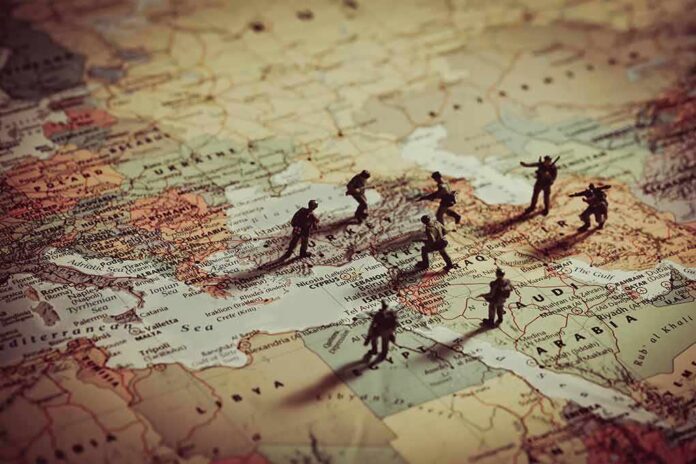The fall of Assad in Syria is being compared to the Berlin Wall’s collapse, as rebels seize Damascus and alter the future of the Middle East.
At a Glance
- Rebels have taken control of Damascus, overthrowing Assad.
- Key cities such as Aleppo, Hama, and Homs have fallen.
- Assad has fled the country, creating uncertainty for Syria’s future.
- International efforts are underway to stabilize the region and support neighbors.
A New Chapter in Syria’s History
Syrian rebel forces have taken Damascus in a lightning offensive, marking a significant change after 13 years of civil war in Syria. This victory, led by a coalition including Hayat Tahrir al-Sham, has forced President Bashar al-Assad to flee the country, creating a pivotal moment reminiscent of the Berlin Wall’s fall. Over 500,000 lives have been lost, and millions displaced since the conflict, which began during the Arab Spring with various domestic and international factions involved.
The rebels captured key cities, including Aleppo, Hama, and Homs, without significant resistance. Forces entered Damascus as government troops withdrew, leaving a vacuum in governance. The rapid takeover in less than ten days has surprised observers and signaled a shift in the balance of power within the region. Experts note that Syrian rebels took advantage of Russia’s distraction in Ukraine and a weakened Hezbollah to orchestrate this coup.
Geopolitical Ramifications
A surprise offensive from the rebels delivered a heavy blow to territories once secured by Assad’s regime, supported by Russian and Hezbollah forces. The immediate capture of major Syrian cities like Aleppo is a landmark achievement, previously considered unattainable by opposition factions. This power shift poses critical questions for international dynamics, particularly the involvement of Russia and Iran, who are deeply invested in Syria’s stability.
“There are currently 900 U.S. military personnel in Syria clustered around a base in al Tanf,” according to the Council on Foreign Relations.
Assad’s departure has set off a chain reaction through Syria’s allies and adversaries. Iran, a staunch supporter of Assad and ally to Hezbollah, faces renewed threats to its regional influence. Turkey, conversely, might reassess its position and potentially increase backing for Islamist groups if Assad remains in exile. Israel, closely watching developments, stands to gain strategically but must navigate the complexities if Turkish-backed factions gain prominence.
— Paul Mason (@paulmasonnews) December 8, 2024
Towards a New Syrian Era
The international community is preparing for the next steps, reverberating around the globe. U.S.-led initiatives aim to bolster stability, assisting neighboring countries such as Jordan, Lebanon, and Israel during this period of transition. President Biden plans direct dialogue with world leaders to address this seismic shift in the Middle East. There is cautious optimism for a democratic Syria post-rebellion.
The United States installed active attention on the capabilities and aspirations of rebel groups, ensuring the maintenance of peace and promoting reconstruction. The global strategy focuses on fostering interconnected efforts to restrain potential extremism, thus guiding Syria towards a hopeful future as a sovereign nation.
Sources:
- https://www.nytimes.com/article/syria-civil-war-rebels.html
- https://www.pbs.org/newshour/world/analysis-what-syrias-reignited-civil-war-means-for-the-middle-east
- https://www.reuters.com/world/middle-east/syria-rebels-celebrate-captured-homs-set-sights-damascus-2024-12-07/
- https://dnyuz.com/2024/12/08/syrian-rebel-takeover-will-have-a-remarkable-ripple-effect-equivalent-to-the-berlin-wall-gop-rep-predicts/











